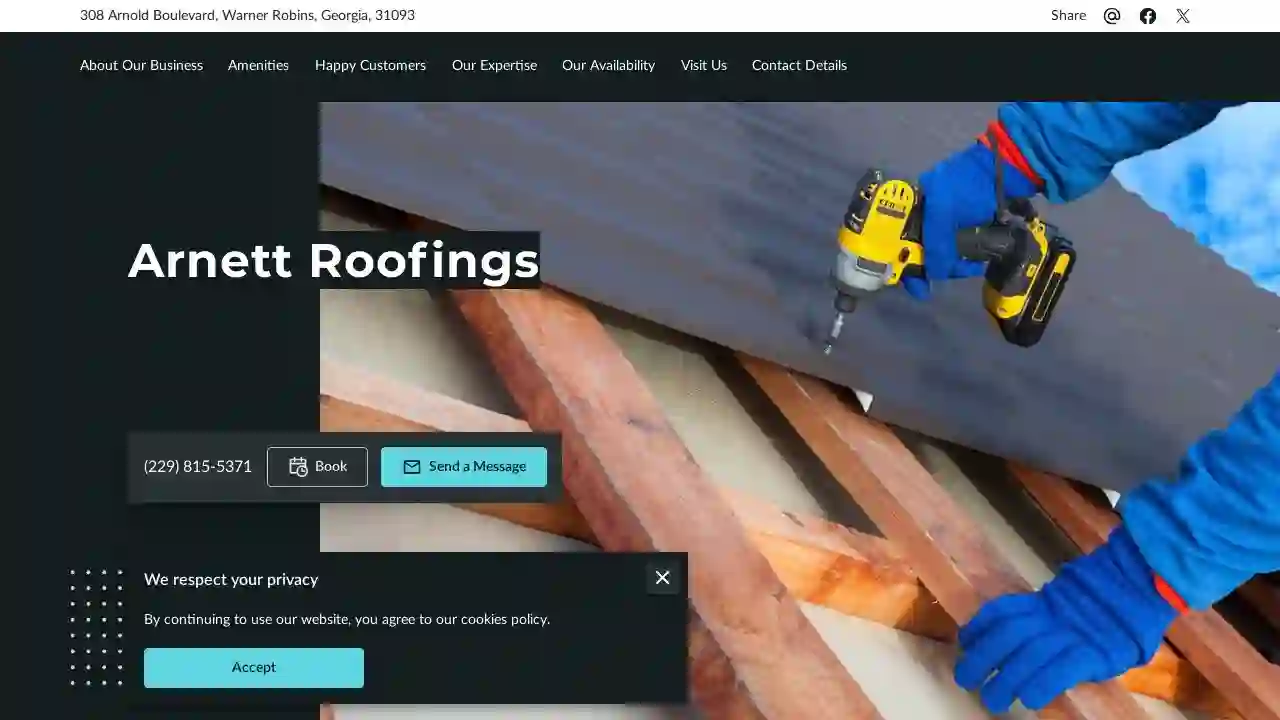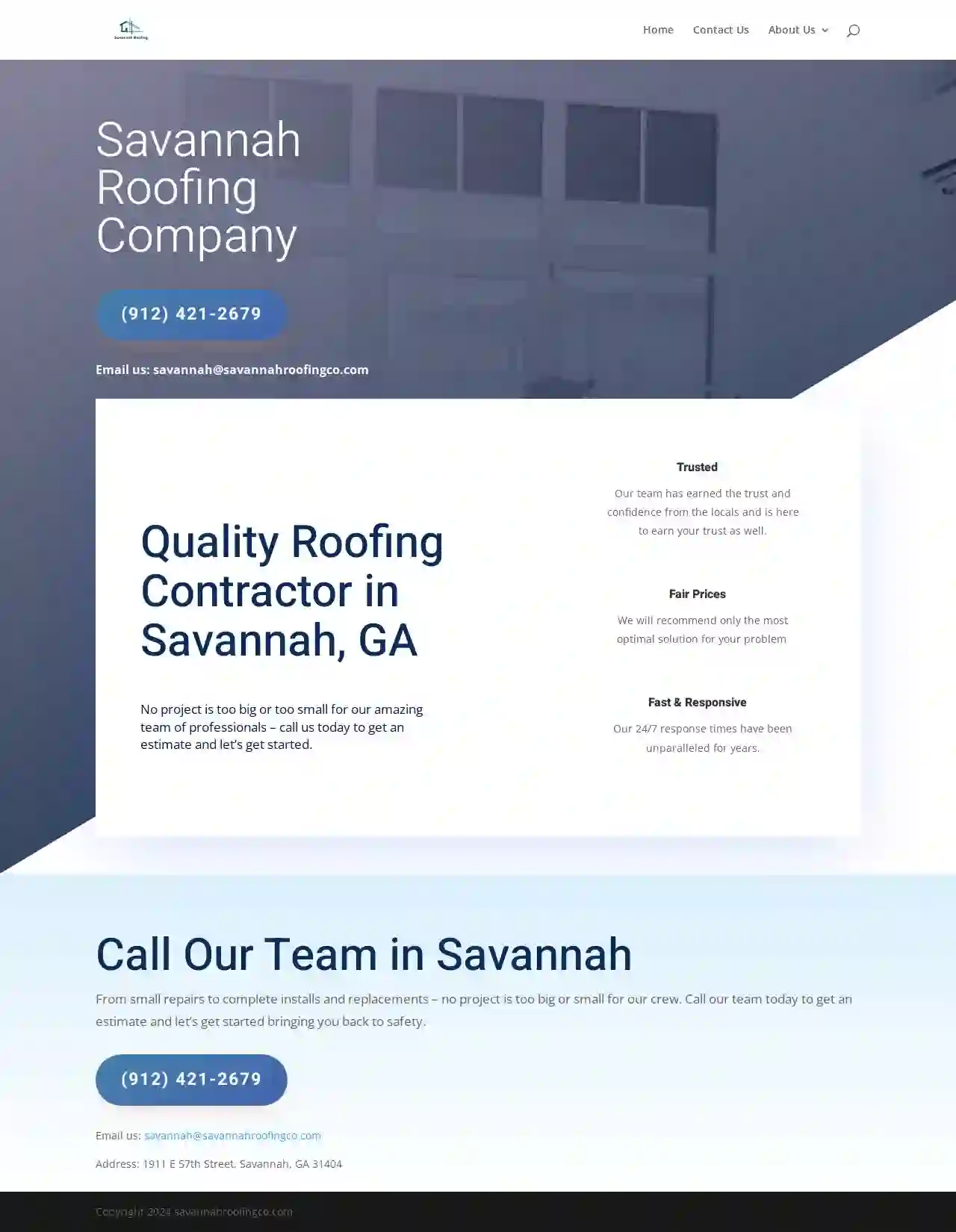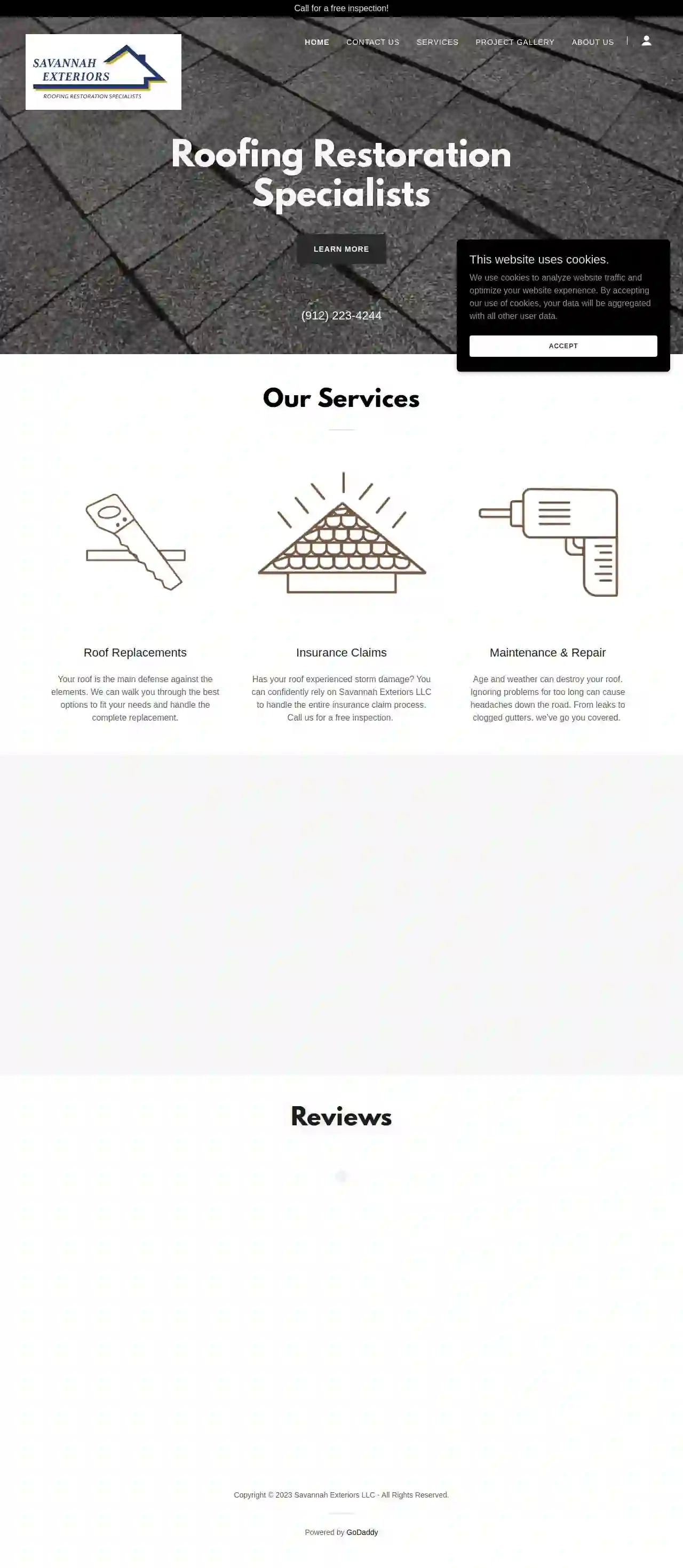Roofing Companies Madison
Top 10 Roofing Contractor in Madison
Get up to 3 Roofing Service quotes for your project today! Compare profiles, reviews, accreditations, portfolio, etc... and choose the best deal.

Ryno Roof Systems Inc
4.610 reviewsAtlanta, USRYNO ROOF SYSTEMS is a roofing company based in Atlanta (Buckhead) and serving the metro area. They offer free estimates for full roof replacement and are committed to providing customers with the highest quality of service. Their team of qualified professionals is backed by a guarantee. Ryno Roof specializes in residential roof repairs and replacements, as well as installing gutters, skylights, roof flashing, and siding. They serve all of metro Atlanta, including Buckhead, Brookhaven, Chamblee, East Point, College Park, Sandy Springs, Vinings, South Fulton, Hapeville, Forest Park, Decatur, Doraville, Dunwoody, Norcross, Morrow and beyond.
- Services
- Why Us?
- Gallery
Get Quote
Alliance Roofing, LLC
532 reviewsSmyrna, GA US, 30082, USRoofing excellence at its finest! Trust Alliance Roofing, LLC for all your roofing needs. With years of experience and a commitment to quality, we are dedicated to delivering exceptional results and outstanding customer service. Our skilled team at Alliance Roofing, LLC will restore your roof's integrity in no time. We offer reliable and expert residential roofing services, from installation to repairs and maintenance. Let us safeguard your most valuable asset with our reliable and trusted roofing services. We provide cutting-edge solutions and top-quality services to ensure the longevity and performance of your commercial roof. Our services include efficient and affordable services for residential and commercial needs. We provide reliable installations, and repair services to ensure the protection and durability of your roof for years to come. Get your roof back in shape with our professional roof repair services. Our top-quality workmanship and superior materials will ensure that your new roof will last and increase the value of your home. Protect your business with a reliable and durable commercial roofing solution. Our skilled team is here to help. Contact us today, and let's restore your roof's functionality and appearance.
- Services
- Why Us?
- Our Team
- Testimonials
- Gallery
Get Quote
Best Choice Roofing Savannah
2.65 reviewsHazel Path Mansion, 105 Hazel Path, Hendersonville, 37075, USBest Choice Roofing is a national roofing contractor recognized as a Top 1% Performer in the U.S. by Owens Corning. With over 60,000 grateful customers and over 85 locations in 24 states, we are America's most trusted roofer. Our team of experts provides top-notch roofing services, including roof repair and replacement, free inspections, and same-day estimates. We are committed to providing exceptional customer service and ensuring that our customers receive the best possible roofing solutions.
- Services
- Why Us?
- Accreditations
- Gallery
Get Quote
Arnett Roofings
308 Arnold Boulevard, Warner Robins, 31093, USAt Arnett Roofings, you'll find a family run and owned business in Warner Robins with years of experience. Rest assured, we are the roofers – all the work is carried out by us, not sub-contractors, so you know the quality is going to be high. With very low overheads we know we can deliver a high-quality package at a competitive price. Discovering a leak in your roof can be a real worry, but our team of fully trained and experienced roofers are able to quickly and easily fix all manner of problems and get you water-tight again in no time. Whether it's a cracked ceiling, storm damage, or leaking windows, we've got years of experience, so we'll be able to diagnose the issue and provide a lasting solution. We approach all our projects with the same commitment and professionalism and we’re proud of our hard-earned reputation for skilled workmanship and attention to detail. Our dedicated team are courteous, approachable and fully up to date with the latest building regulations, ensuring all projects are completed to the highest standard.
- Services
- Why Us?
- Testimonials
Get Quote
Macon Roof Repair
327 Alexandria Drive Suite 5, Macon, 31210, USRoof Repair Macon is a full-service roofing company that offers a wide range of services for residential and commercial customers. Our team of experts is dedicated to providing high-quality roofing solutions that meet the unique needs of each client. We understand the importance of maintaining a safe and secure roof, and we are committed to helping our customers achieve that goal. Whether you need a roof inspection, repair, or replacement, we have the expertise and resources to get the job done right. Our services include residential roof replacement, roof inspections, residential roof repairs, commercial roof repairs, and commercial roof replacement. We also offer a free estimate to our customers to help them understand the cost of any roofing project. At Roof Repair Macon, we prioritize our customers' needs and work with them to ensure that their roofing project is completed quickly and within their budget. We value our community and are committed to providing exceptional service to our customers.
- Services
- Why Us?
- Gallery
Get Quote
Designer Roofing & Restoration
5123 reviews2 Mall Ct, Savannah, 31406, USAt Designer Roofing & Restoration, we understand the importance of a secure and reliable roof for your home. With our commitment to integrity, excellence, and craftsmanship, we redefine roofing solutions in Savannah. From tackling common issues like storm damage to providing personalized care, we prioritize your peace of mind. Trust us to install manufacturer-certified roof systems using quality products to ensure durability and performance. Schedule an inspection today and let us safeguard your home against the elements—because your peace of mind is our priority.
- Services
- Why Us?
- Gallery
Get Quote
Savannah Roofing Company
523 reviews1911 E 57th Street, Savannah, 31404, USSavannah Roofing Company has been making sure your roofing systems perform well all year round since 1995. Quality service and excellent workmanship is our promise to you. From roof repairs to complete replacements and installs – we got you covered. Sweltering heat in the middle of the summer is no joke and our crew understand how important your family’s comfort is. Modern homes and offices are built to extremely tight standards for better roof safety and efficiency, but many buildings lack the proper gutter system, which can probably cause some roofing problems in the future. We always stand behind our work, and you can count on us to follow through with all our commitments. Your safety is our priority.
- Services
- Why Us?
- Testimonials
- Gallery
Get Quote
Bell Roofing
4.8404 reviewsSuite 109, 2531 Briarcliff Road NE, Atlanta, 30329, USAt BELL Roofing, all our work is guaranteed. We pride ourselves on doing work that we can stand behind. Every project we complete is done right the first time. We only do roofing, great roofing that solves issues. Flat roofs, steep roofs, shingle roofs, solar roofs, we master them all. We know and use the entire breadth of membranes (shingles, Mod Bit, TPO, PVC, EPDM), coatings (silicone, acrylics), metals, wood framing and epoxy to solve roofing problems. All roofs come with a materials and workmanship warranty of 10, 20, 25, or 30 years. Our work delivers peace of mind. BELL Roofing’s installation teams have been trained and certified by roofing manufacturers to install the right materials with the right specifications for each system. All repairs come with a materials and workmanship warranty. Commercial repairs are backed by a 2-year warranty, and residential repairs are backed by a 1-year warranty. If you need great roofing expertise, trust BELL. Only our work is BELL DONE, BELL GUARANTEED.
- Services
- Why Us?
- Accreditations
- Our Team
- Testimonials
- Gallery
Get Quote
Savannah Roofs, LLC
4.631 reviewsSavannah, USProtect what matters most with Savannah Roofs, LLC in Savannah, GA. For years, we’ve been a trusted source for roof repairs, roof installation, storm debris removal, and other services in the Savannah, GA, area. We’ll be there when a storm blows shingles off your roof or your office’s roof leaks. Our licensed and insured roofers have worked with commercial and residential clients for over 23 years. Let our team take care of you. Why Choose Us Over 23 Years of Experience Licensed and Insured Roofing Contractors Education and Transparency Insurance Claim Assistance Family-Owned and Operated We’re There for You When Disaster Strikes When nature strikes, let us know. We’re here to help you pick up the pieces after a tornado, flood, hurricane, windstorm, or hail storm. Our team hauls away broken tree branches, prevents mold, and extracts water from your property’s structure. We’ll also be there to walk you through the insurance claim process. Storms don’t work on a schedule, and neither do we — call us for 24/7 emergency service.
- Services
- Why Us?
- Testimonials
- Gallery
Get Quote
Savannah Exteriors LLC
4.85 reviewsSavannah Exteriors LLC, Rincon, 31326, USAt Savannah Exteriors LLC, we are dedicated to providing top-quality roofing services to residential customers in the Rincon, Georgia area. We understand the importance of a strong roof as the primary defense against the elements, especially in coastal regions where storms can be frequent and severe. Our team of experienced installers utilizes only the best products in the roofing industry to ensure long-lasting and reliable results. We pride ourselves on our commitment to customer service, providing clear communication, transparent pricing, and a hassle-free experience from start to finish. Whether you need a complete roof replacement, storm damage repair, or routine maintenance, Savannah Exteriors LLC is here to meet your needs. We are licensed and insured, giving you peace of mind knowing your project is in capable hands. We strive to save you both time and money by using high-quality materials and combining our experience with a dedication to exceptional customer service. We will not leave the job until it is finished and you are satisfied with the results.
- Services
- Why Us?
- Our Team
- Gallery
Get Quote
Over 17,196+ Roofers in our network
Our roofing experts operate in Madison and surrounding areas!
Roofyng.com has curated and vetted Top Roofers in and around Madison. Find the most reliable contractor today.
Frequently Asked Questions About Roofing Companies
- Metal roofs: Reflect sunlight, reducing cooling costs.
- Tile roofs: Offer thermal mass, regulating temperature.
- Cool roofs: White or light-colored roofs with high solar reflectance.
- Green roofs: Vegetated roofs providing insulation and reducing heat absorption.
- Leaks or Water Stains: Water stains on ceilings or walls, dripping water, or dampness in the attic.
- Missing, Cracked, or Curled Shingles: Inspect for damaged or missing shingles, especially after a storm.
- Damaged Flashing: Look for rust, corrosion, or gaps in flashing around chimneys, vents, or skylights.
- Sagging or Uneven Rooflines: A sagging roof could indicate structural problems.
- Granule Loss: Excessive granules in gutters suggest aging asphalt shingles.
- Moss or Algae Growth: Can trap moisture and damage roofing materials.
- Asphalt Shingles: 20-30 years
- Metal Roofing: 40-70 years
- Tile Roofing: 50-100 years or more (clay and slate)
- Flat Roofing: 15-30 years (depending on material)
- Slate: 100 years or more
- Wood Shakes or Shingles: 30-50 years (with proper maintenance)
What is a roof valley, and why is it important?
What are some energy-efficient roofing options?
What are some common signs of roof damage?
How long does a roof typically last?
What is a roof valley, and why is it important?
What are some energy-efficient roofing options?
- Metal roofs: Reflect sunlight, reducing cooling costs.
- Tile roofs: Offer thermal mass, regulating temperature.
- Cool roofs: White or light-colored roofs with high solar reflectance.
- Green roofs: Vegetated roofs providing insulation and reducing heat absorption.
What are some common signs of roof damage?
- Leaks or Water Stains: Water stains on ceilings or walls, dripping water, or dampness in the attic.
- Missing, Cracked, or Curled Shingles: Inspect for damaged or missing shingles, especially after a storm.
- Damaged Flashing: Look for rust, corrosion, or gaps in flashing around chimneys, vents, or skylights.
- Sagging or Uneven Rooflines: A sagging roof could indicate structural problems.
- Granule Loss: Excessive granules in gutters suggest aging asphalt shingles.
- Moss or Algae Growth: Can trap moisture and damage roofing materials.
How long does a roof typically last?
- Asphalt Shingles: 20-30 years
- Metal Roofing: 40-70 years
- Tile Roofing: 50-100 years or more (clay and slate)
- Flat Roofing: 15-30 years (depending on material)
- Slate: 100 years or more
- Wood Shakes or Shingles: 30-50 years (with proper maintenance)